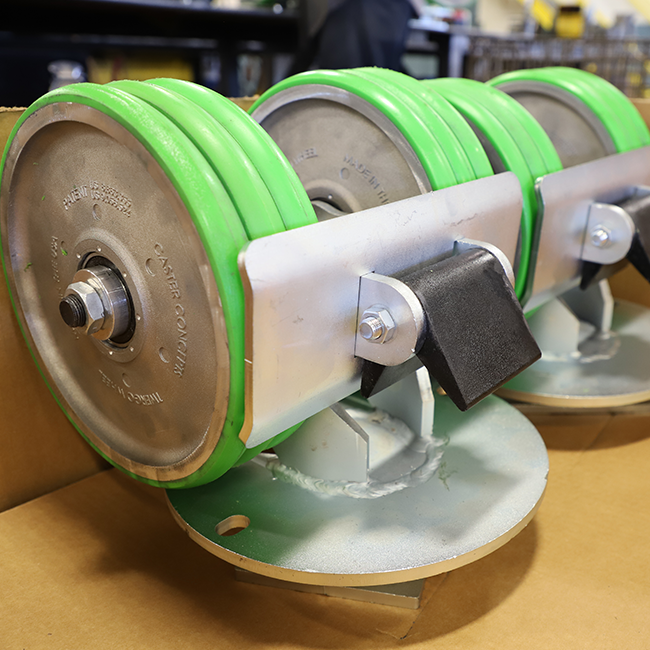

Typically, customers or prospects grow wary of going with a custom or tailored route with their industrial casters. First and foremost, they are concerned about the project’s cost, and the thought of going with a “custom” solution will break the bank. I want to help clear up what actually drives the cost of an industrial caster project.
If we can design a solution that fits into one of our standard swivel sections, this will help control the entire project’s cost. Standard swivel sections have forgings designed and processes optimized for efficient manufacturing. Since variation is limited, these standard swivel sections can be made in large quantities and stocked at the manufacturer.
A custom bolt hole pattern is another area that can add cost due to the special machining required. Depending on the number of casters needed for the project, the setup time can drastically affect the caster’s overall price. We find that once lot sizes get above 15 pieces, the setup cost for a special bolt hole pattern starts to approach the cost of a standard bolt hole pattern.
Most caster companies have a slate of standard wheel castings used to produce wheels of varying sizes. Using a casting as the wheel core is essential to controlling cost. If you can’t achieve the desired load capacity or floor loading pressure with a casting, the core has to be made from a billet of metal or fabricated from a tube and plate.
Regardless of quantity, the casting will always be significantly less expensive than using a billet or fabricated design.
There are also times when the design calls for a higher performance urethane. Suppose a caster has a size constraint and requires a urethane tread for grip or floor protection, heavier loads, faster-operating speeds, or a longer operational duty cycle. These examples require a higher performance urethane tread. And Urethanes can cost $4/pound up to $16+/pound. So, if you have the room, it is usually more cost-effective to go with a more standard urethane and use a larger wheel.
The type of bearing used in the wheel can also dramatically impact the project’s cost. Larger bearings, less common bearings, the bearing type, and brand all affect your bottom line. We find that branded bearings offer higher performance than imported bearings but come at a cost premium – usually 2-4x the cost of imported bearings. Also, the size of the bearing increases exponentially for small changes in size. This usually has to do with production lot sizes for the manufactured bearings. Higher volume production means lower-cost bearings to keep your budget under control.
Adding caster options also impacts the cost. Adding wheel brakes, swivel locks, toe guards, sweepers, etc., increase a caster’s price and, depending on size, range anywhere from a few dollars added on to hundreds of dollars. Most brakes and locks have standard designs to control costs. If your application requires special components to meet a particular design, this could take a $50 option and turn it into a $500 option.
So before you buy, discuss your application with us or any rival application specialist. That way, your caster needs can be established and routed into something that fits the budget for your application. If you keep the items listed above in mind, then other customizations like overall height, swivel radius, etc., can be implemented with minimal impact to your project.